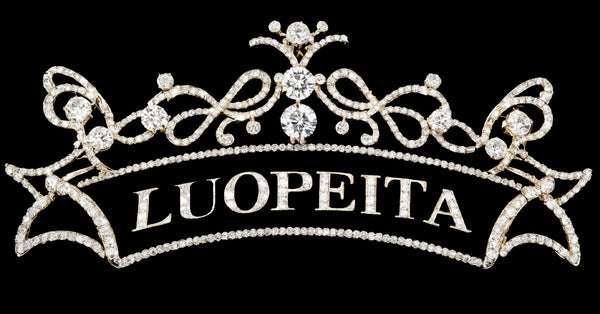Rhinestone




Originally, rhinestones were rock crystals gathered from the river Rhine, hence the name, although some were also found in areas like the Alps (the source of the Rhine). Today the name "rhinestone" applies only to varieties of lead glass known as crystal glass. The availability of such products increased greatly in the 18th century when the Alsatian jeweller Georg Friedrich Strass (1701-1773) developed imitation diamonds by coating the lower side of lead glass with metal powder. Many European languages use the word strass (or equivalent) to refer to rhinestones.
As opposed to the classic rhinestones, which had a metal-powder coating on the bottom side only, several companies have opted to mass-produce iridescent lead glass by reducing the metal-coating thickness and applying it uniformly, not using metal powder with a binder but applying various forms of metal deposition (thin foil, vapor deposition, etc.). Such developments include Favrile glass by Tiffany in 1894, Carnival glass under the name "Iridrill" by Fenton in 1908, "Aurora Borealis" glass by Swarovski in 1956 and PVD-coated dichroic glass in the late 20th century, amongst many other decorative lead glasses coated with a thin metal layer and sold under various commercial names such as "rainbow glass," "aurora glass" and such.
Rhinestones can be used as imitations of diamonds, and some manufacturers even manage to partially reproduce the glistening effect which real diamonds have in the sun.
Typically, crystal rhinestones have been used on costumes, apparel, and jewelry. Crystal rhinestones are produced mainly in Austria by Swarovski and in the Czech Republic by Preciosa and a few other glassworks in northern Bohemia. In the United States, these are sometimes known as "Austrian crystal."
The rhinestone-studded Nudie suit was invented by Nudie Cohn in the 1940s, an Americanization of the matador's "suit of lights." Rhinestone material is often used as an alternative to sequins.
A popular type of rhinestone is the AB (Aurora borealis) rhinestone. AB rhinestones have a particular type of iridescent coating, applied with vacuum metal deposition. (Wikipedia,2024)
Rhinestone clothing refers to the processing technology of inlaying rhinestones on fabrics, leather and other materials. Rhinestones are usually used on fabric, i.e. clothing or fabric accessories. The working principle is that the hot diamond is exposed to high temperatures (because most rhinestones are made of crystal or glass and are not afraid of high temperatures). Common temperatures are around 150-200°C, which melts the glue layer at the bottom of the drill bit. stick to objects. At present, clothing hot stamping has become a fashion and trend. As an accessory, bronzing can add beauty to clothes and increase their value.
